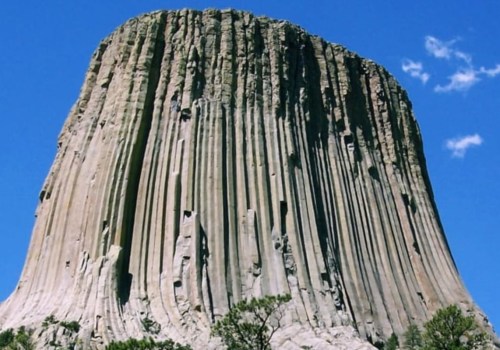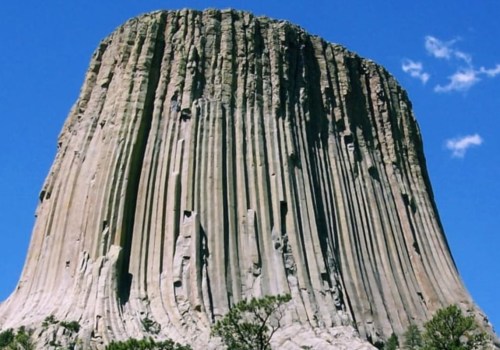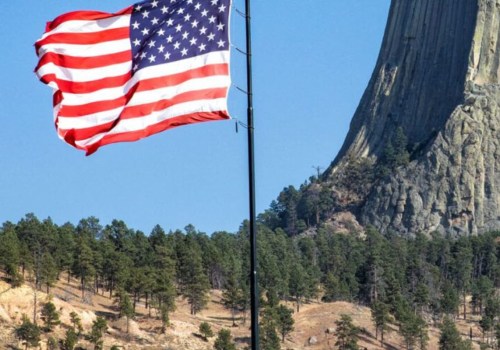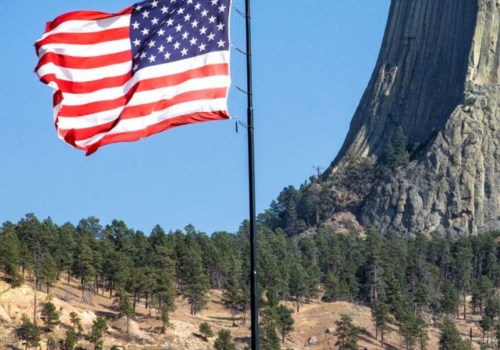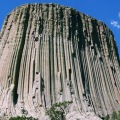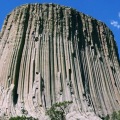Devils Tower, the first declared national monument in the United States, is an iconic landmark in northeastern Wyoming. Rising 1,267 feet above the surrounding area, this igneous intrusion has been a source of mystery and fascination for centuries. How was it formed? Was it a volcanic plug or a laccolite? Was it created by a giant brown bear? Geologists have long debated the origin of Devils Tower, and while the exact details remain unclear, there is evidence to suggest that it was formed by molten rock forced upwards from deep in the earth. Erosion has drastically changed the area around Devils Tower.
It is believed that when the Tower was formed about 50 million years ago, it was between one and two miles below the Earth's surface. Between 5 and 10 million years ago, erosive forces began to expose the Tower. The reddening of rocks is due to oxidation of minerals, and the region around the tower is comprised of Spearfish, Gypsum Spring and Sundance formations. The most widely accepted theory is that Devils Tower is a laccolito.
A laccolite is a large mass of igneous (volcanic) rock that penetrated through sedimentary rock beds, but did not actually reach the surface, producing a rounded bulge in the upper sedimentary layers. The composition of the volcanic material that forms Devils Tower suggests that the magma body was quite thick when it formed, which allowed it to maintain its shape. A thinner magma body would form a hard layer over a wider area that resists erosion and remains on a flat plateau. The oldest rocks visible in the Devils Tower National Monument were deposited in a shallow sea during the Triassic period, 225 to 195 million years ago.
The Devil's Tower is made up of spectacular vertical columns of igneous rock with five or six sides each. Presumably, if the Devil's Tower were a volcanic plug, any volcanic created by it volcanic ash, lava flows and volcanic debris would have eroded long ago. The other theory is that Devils Tower is a volcanic plug, or the neck of an extinct volcano. However, current research supports the conclusion that the Devil's Tower was not a volcano, but that it was injected between layers of sedimentary rocks and cooled underground.
Although the Devil's Tower has long been a prominent landmark in northeastern Wyoming, the origin of this gigantic rock obelisk is still a bit obscure. The Kiowa and Cheyenne say that a huge brown bear raked the spire of Devils Tower while people huddled on top. This post has been shared and replicated often claiming that Devils Tower was an ancient and giant tree. However, geological estimates have placed its age at more than 50 million years old, suggesting that it could not have formed thousands of years ago as suggested by some interpretations of Biblical accounts. Today, thousands of visitors enjoy Devils Tower every year and it's a challenge for any adventurous climber. If Devils Tower had been exposed through slow erosion of the earth, many things about it would be different.
Evolutionary geologists interpret evidence surrounding Devils Tower as evidence of millions of years of slow erosion. Devils Tower remains an iconic landmark in northeastern Wyoming and continues to be a source of mystery and fascination for many people around the world.
